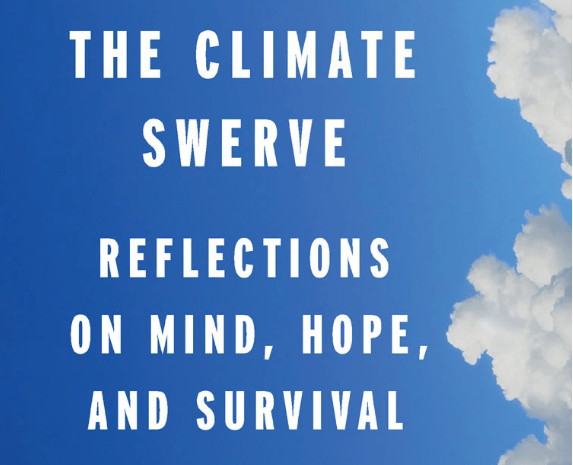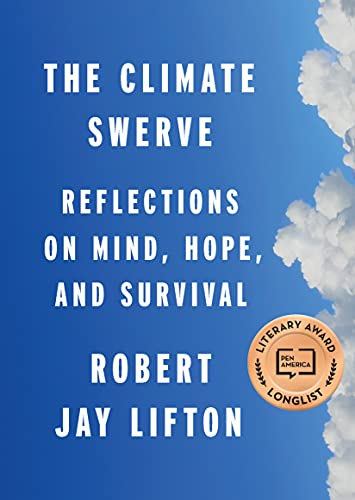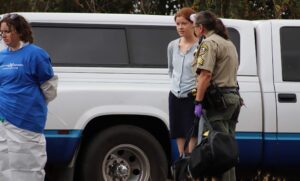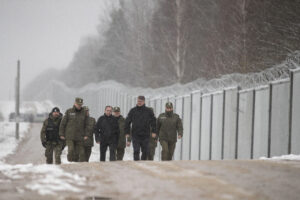The Climate Swerve
Psychologist Robert Jay Lifton believes climate awareness can channel our "anxiety of responsibility" into constructive action. The New Press
The New Press
“The Climate Swerve: Reflections on Mind, Hope, and Survival” A book by Robert Jay Lifton
American psychologist and author Robert Jay Lifton, best known for his pioneering investigations of the causes and psychological impacts of warfare, political violence, and coercive thought reform or brainwashing, has recently focused his attention on a newer existential threat to humanity: climate change. His slim volume, “The Climate Swerve: Reflections on Mind, Hope, and Survival,” is a personal meditation on public perceptions of climate change and nuclear Armageddon.
Written shortly after his 90th birthday, the book expands upon an essay he published under the same title in 2014, and it reads more like a memoir than a scientific text. Its main premise is that most of humankind is now coming to accept the reality and dangers of climate change, despite delaying tactics by the fossil fuel industry and its supporters. Borrowing a term from Stephen Greenblatt’s Pulitzer Prize-winning exploration of atomic awareness and cultural awakening, “The Swerve,” Lifton applies it to an “evolving awareness of our predicament,” in which modern civilization threatens the future of our species. Despite the menace posed by the “apocalyptic twins” of climate and nukes, however, he also believes that the current swerve in our climate awareness can lead to constructive action, as a similar swerve did for nuclear arms control.
Click here to read long excerpts from “The Climate Swerve” at Google Books.
Lifton writes of the “psychic numbing” that can prevent people from feeling appropriate emotional responses to threats and disasters, making it more difficult to adapt to or mitigate human-driven climate change. He distinguishes the willful “climate change rejection” of some politicians and pundits from climate denial, a coping mechanism for dealing with fear or uncertainty. And he extends the concept of “stranded assets,” the fossil fuel resources that energy companies might be forced to leave untapped after investing in them, to the realm of morality, in which outdated attitudes that place profits over the common good become “stranded ethics.”
What I did not expect from the title was an in-depth retrospective on Lifton’s six decades of study on the psychology of nuclear threats. At least half of the book reviews the history of nuclear weapons; samples interviews with survivors of Hiroshima, Auschwitz and Vietnam; and exposes the Jekyll-Hyde role of scientists in creating and then protesting nuclear power and weaponry. I found that content to be at least as compelling as the climate musings, and the imbalance of information and emotional impact left me wishing for a clearer focus on the nuclear story alone, for which Lifton’s reputation is well deserved.
That additional information, however, allows Lifton to draw interesting parallels between nuclear and climate threats. Both can produce intense anxiety over “invisible contamination” of the habitats that sustain us, both fit familiar biblical narratives of global apocalypse, and both have been obscured by bizarre rationalizations from individuals with vested interests in maintaining the status quo. They differ in important ways, as well. Nuclear war would be a sudden intentional disaster and would be experienced by the people who caused it. Climate change is more incremental, collective and unintentional, the result of simply living our lives as usual. Some of its effects are already upon us—including those faced by Pacific island nations that once suffered from nuclear weapons testing and now face rising sea levels—but the worst effects will afflict future generations that did not cause them. With his strong background in nuclear issues to support him, Lifton warns against narrow-minded approaches to the climate threat. He takes climate scientist and activist James Hansen to task for supporting nuclear power, calling such “climate nuclearism” a dangerous understating of the risks of atomic energy.
As a climate scientist, I found nothing new regarding the science of climate change, and in the prologue Lifton warns the reader not to expect it. I also found no major errors in the sparse scientific content. However, having enjoyed Lifton’s weighty analyses of nuclear psychology, I wanted equally detailed insights into the nature of climate rejection, denial and acceptance, or more references to current research in climate psychology and how to turn fear into effective action. To me, blending the two topics made Lifton’s lesser experience in climate issues more apparent, and in places it made the narrative seem to ramble off course.
“The Climate Swerve” is not a ground-breaking contribution to climate awareness on par with Bill McKibben’s “The End of Nature,” and many other writers have addressed similar concepts elsewhere. That said, Lifton’s book is still well worth the read. To my eye, it is a prescient handoff to the next generation of scholars who may see the nuclear and climate swerves as steps in the same process: the evolution of awareness of ourselves as a collective force of nature. Many people now refer to this new phase of world history as the Anthropocene epoch, the age of humans, and Lifton hints at the concept when he refers to a “species awareness” that is necessary to face these threats to the human habitat.
Once we accept the harsh facts of climate change (or nuclear apocalypse) and acknowledge the fear that comes with them, Lifton reminds us to take a step further. We must unleash that primal fear, he argues, so we can then use our intellect to channel it into a more mature “anxiety of responsibility” that leads to concerted action. He mentions the Paris Climate Conference of 2015 and the climate action group 350.org as manifestations of such actions, but more examples abound. The insurance industry is now planning for a warmer, stormier future, the U.S. military considers climate change to be a national security threat, and even ExxonMobil expects the retreat of polar ice to facilitate its exploitation of fossil fuels in the Arctic. Equally important is an energetic new cohort of young people who consider climate change to be the great challenge of their generation.
Perhaps the best reason to read “The Climate Swerve” may be this note of hope that Lifton weaves throughout the book. “Imagining massive destruction and death,” he writes, is “a prerequisite for wisdom” and for maturing as a “talented species in deep trouble.” In taking appropriate, well-informed action now, we can experience “symbolic immortality” not only through our immediate descendants but also by “living on in humankind.” “Whatever our age,” he continues, “we are . . . part of a flow of endless generations that include forebears as well as children and grandchildren.” At its core, Lifton’s climate swerve is a growing sense of connection to our planet and one another. “It is very late in the game,” he concludes, “but at the same time far from too late.”
Curt Stager is a professor of natural sciences at Paul Smith’s College and the author of four books, including the forthcoming “Still Waters: The Secret World of Lakes.”
©2017 Washington Post Book World
Your support matters…Independent journalism is under threat and overshadowed by heavily funded mainstream media.
You can help level the playing field. Become a member.
Your tax-deductible contribution keeps us digging beneath the headlines to give you thought-provoking, investigative reporting and analysis that unearths what's really happening- without compromise.
Give today to support our courageous, independent journalists.









You need to be a supporter to comment.
There are currently no responses to this article.
Be the first to respond.